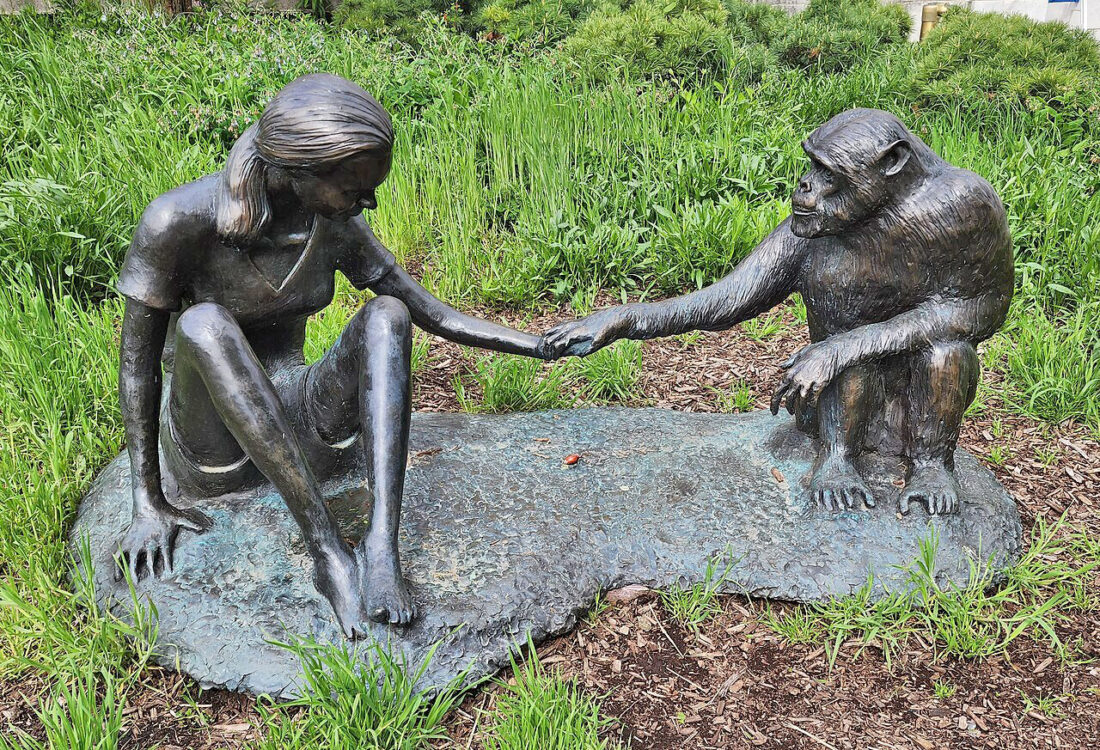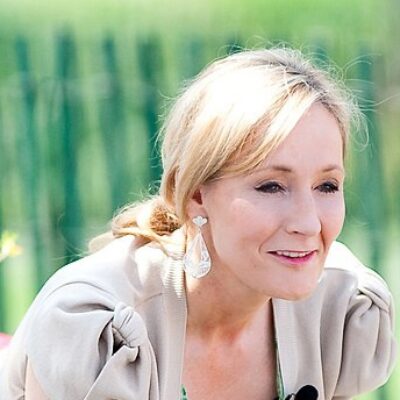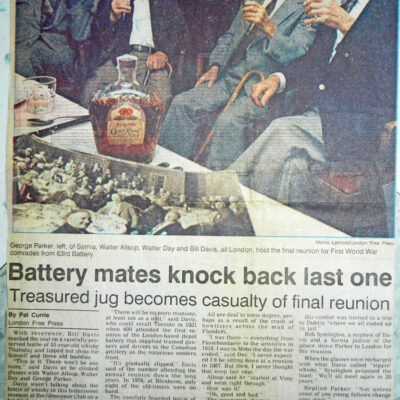When I was in second or third year Anthropology at UWO, I took a primatology course to satisfy the requirement of having a physical anthropology credit. We watched a National Geographic film, Miss Goodall and the Wild Chimpanzees, about Jane Goodall and her research at Gombe in Tanzania.
In the 1970s a triumvirate of young women primatologists were taking the world by storm. Called “Leakey’s Angels” and “the Trimates,” they’d been handpicked by renowned paleoanthropologist Louis Leakey to study the great apes.
They were Jane Goodall, studying chimpanzees, Dian Fossey, studying mountain gorillas, and Biruté Galdikas, studying orangutans. Oh wow, they were young, beautiful and smart. And they were everywhere.
National Geographic magazine had cover features about all three of them. Watching the Jane Goodall film in class reinforced an inkling of uncomfortableness that I’d had. My anthropology, sociology and philosophy courses were teaching me critical thinking. Outside of class, I was also learning about feminist theory and practise. The two came together in a paper I wrote for my primatology course.
Primatology in popular culture
My paper was about the packaging of these primatologists like Hollywood starlets. Three pretty young women were the objects of interest as much as the great apes were. Apes and women were being marketed for the amusement of the rest of us, just like zoos do.
With my youthful puritanical zeal about such objectification of women and animals, I disapproved of this. Over the years, seeing the continued public awareness of these women and their work, I realized I had been wrong. Not wrong in my analysis, but in the effect of such popularization. Thanks to mainstream media coverage of the work of Drs. Goodall, Fossey and Galdikas, few people do not know something about non-human primate social organization, and their plight due to poaching and loss of habitat.
Dr. Leakey chose well in his pick of these primatology students. All three continued their research throughout their lives. They too did well in choosing to overlook the showbiz and sexism and instead maybe use it as a way to keep their work and the animals in the public consciousness.
Dr. Fossey gave her life for the mountain gorillas in Rwanda – literally. She was murdered in her mountain home in 1985, probably by a poacher. For over fifty years, Dr. Galdikas has researched, rehabilitated, advocated for and taught about orangutans in Borneo.
And Dr. Goodall? The Jane Goodall Institute, Canada describes her as “a conservationist, humanitarian and crusader for the ethical treatment of animals.” And it quotes the words by which, clearly, she lived:
“Use the gift of our life to make the world a better place.“

For more on Dr. Goodall and her fellow primatologists (and source of the National Geographic covers), see Kate on Conservation Dec. 19, 2015, “Nat Geo’s Trimates: Primate poaching, problems and protection.”





